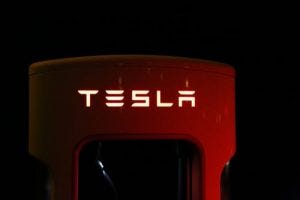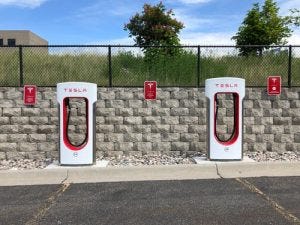The Evolution of Electric Vehicles: From Concept to Mainstream
Written on
Chapter 1: Historical Background of Electric Vehicles
The perception that electric vehicles (EVs) emerged solely due to a growing focus on sustainability is only partially correct. While the modern interest in EVs may seem sudden, much of the progress in hybrid and electric vehicle technology can be traced back to significant political events from the 1970s oil crisis. This crisis ignited support for research and development in hybrid and electric technologies.
Incentives were provided to U.S. automakers to encourage the creation of electric vehicles, including grants and loan guarantees for developing hybrid and electric technologies. However, the initial offerings fell short in performance compared to traditional gasoline-powered cars, with maximum speeds of around 45 mph and typical ranges of just 40 miles. As a result, advancement in electric automobiles slowed until environmental issues gained prominence in the 1990s.
The enactment of the 1990 Clean Air Act Amendment and the 1992 Energy Policy Act rekindled interest in electric and hybrid vehicle development. General Motors launched the EV1 between 1996 and 1999, marking the first mass-produced electric vehicle, but production was halted as the company deemed EVs niche and not financially viable.

Chapter 2: The Rise of Tesla Motors
In 2006, a small startup from Silicon Valley, Tesla Motors, announced its plan to manufacture electric vehicles. For most automakers, the shift to electric cars was driven by regulatory pressures aimed at reducing emissions or as a marketing tactic to appear environmentally conscious. However, Tesla had a different vision.
Tesla's primary objective is to produce electric cars while promoting energy independence. Founder Elon Musk has expressed that Tesla's goal is to create high-quality, affordable electric vehicles that can be widely adopted. In 2006, Musk confidently asserted that their cars would achieve a range of at least 200 miles per charge, a claim that seemed ambitious at the time.
Musk has gained notoriety not only for his innovative approach but also for his engaging public persona. A notable remark from 2017 encapsulates his ambition: “(Tesla) will not stop until every car on the road is electric.”

Chapter 3: Mainstream Acceptance and Challenges
Although we haven't fully arrived at a world dominated by electric vehicles, Tesla has played a crucial role in normalizing them rather than relegating them to novelty status. A significant factor in Tesla's success is its commitment to customer support. Many electric vehicle owners experience "range anxiety," the fear of depleting their battery while away from a charging station. To combat this, Tesla has established an extensive network of Supercharger Stations, allowing for quick recharges during long trips. Furthermore, the Tesla Model S recently achieved a range of up to 400 miles on a full charge, surpassing their initial target.
Alongside impressive range, features like autopilot and remote software updates set Tesla apart from its competitors. Until recently, the company enjoyed a dominant position in the electric vehicle market. However, the introduction of the Porsche Taycan signals increasing competition. Whether Porsche or another contender can capture market share currently held by Tesla remains to be seen.
The key to Tesla's success appears to be its clear intention. The company has shown a distinct commitment to making electric vehicles a viable option for the mass market. Until other manufacturers embrace the electric future of sustainable transportation, Tesla is likely to remain the frontrunner.
Electric Vehicles | Big Ideas 2024: This video explores the advancements in electric vehicle technology, highlighting innovations that make them more accessible and appealing to consumers.
We Made FLYING CAR in Real Life: This video chronicles the journey from concept to reality of a flying car, blending futuristic ideas with practical engineering challenges.
If you found this article engaging, consider listening to our podcast episodes featuring discussions on technology and innovation.